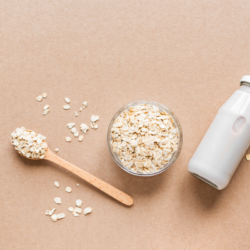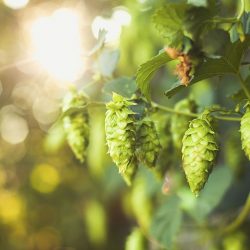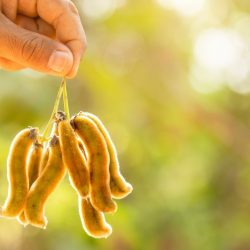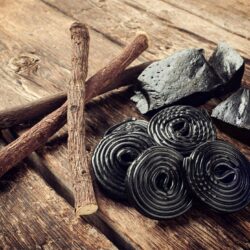In the past, feverfew was known as Chrysanthemum parthenium . If we have since kept its adjective, this chrysanthemum has disappeared in favor of a tanacetum which borders on tansy, while this previous substantive brought it closer to the vast tribe of “chrysanthemums” , a word forged thanks to two Greek roots: chrysos , “Gold” and anthemos , “flower”.
A little history
Cazin , evoked a Matricaria parthenium , whose plate XXIV of the Reasoned Treaty immediately reassures us as to its identity: it is indeed feverfew which shares with its cousin the matricaria many common characters that can be explained, between others, by this parthenium which was, a long time ago, the name given to several plants, and which comes from the Greek parthenos meaning “young girl”; a way of showing that feverfew is also a woman’s plant .
In the Middle Ages, it was widespread and prized, but undoubtedly still confused with the matricaria, as it spreads geographically from East to West, being actually originating in the Near East and South-East of the Europe.
Its emmenagogue properties have not escaped the notice of the English physician Nicolas Culpeper, who wrote in the 17th century that feverfew is “a natural fortifier of the womb (…) It cleanses the womb by expelling the remains of the placenta after childbirth (thing important otherwise infections can occur). She lavishes all the good that a woman can expect from a plant ”.
What are the main pharmacological properties of the flowering aerial parts of Feverfew?
Anti-migraine properties:
In a migraine model, feverfew extract enriched with parthenolide significantly reduced, in neurons of the caudal spinal nucleus of the trigeminal nerve, the expression of the c-Fos protein (involved in nociceptive processes, i.e. that is, in the perception of pain ) induced by nitroglycerin. At the same time, the purified parthenolide inhibits nitroglycerin-induced neuronal activation in other brain nuclei, and significantly inhibits the activity of nuclear factor kappa B (NF-kB), which notably plays a central role in the immune response as well as in inflammatory reactions .
In humans, numerous clinical trials meeting rigorous scientific criteria (randomized, double-blind, multicenter and placebo-controlled studies) have indeed demonstrated the anti-migraine activity of feverfew.
Anti-nociceptive and anti-inflammatory properties:
-
Analgesic effect:
Demonstrated in vivo , at the cranial level, parthenolide inhibits, among other things, nociception and neurogenic vasodilation in the trigeminovascular system by targeting the ankyrin channel 1 (TRPA1). Migraine is thus triggered by the release of the peptide linked to the calcitonin gene (CGRP) by the trigeminal neurons. The parthenolide abrogates ultimately nociceptive responses evoked by stimulation of the trigeminal endings devices. Targeting of the TRPA1 channel and neuronal desensitization by parthenolideinhibit CGRP release from trigeminal neurons as well as CGRP-mediated meningeal vasodilation. Partial agonism of the TRPA1 channel, associated with desensitization and defunctionalization of nociceptors, further results in inhibition of the release of CGRP in the trigemovascular system which may in fact contribute to the anti- migraine effect of parthenolide .
Other properties:
Anticancer activity: a 1999 study showed that parthenolide also inhibits the growth of tumor cells in vitro . This was confirmed in 2006 against two human breast cancer cell lines and one cervical cancer cell line, then in 2007 by another team, on human lung carcinoma, human medulloblastoma, adenocarcinoma cell lines. human colon, and on human umbilical vein endothelial cells, thus confirming the antiproliferative potential of parthenolide .
Are there any precautions for use with feverfew?
Contraindications:
- The EMA does not recommend the use of feverfew in pregnant or breastfeeding women ( Tanacetum parthenium is emmenagogue, it causes menstruation and may be abortive), as well as in children and adolescents under 18 years of age.
- Not recommended for people with a declared allergy to asteraceae.
Precautions for use:
- A prior medical consultation is necessary in order to make the diagnosis of migraine and to determine its origin.
- Medical follow-up in case of taking antiplatelet agents and anticoagulants.
Drugs interactions :
- Potential enhancement of the effect of antiplatelet agents as well as anticoagulants.
- Feverfew moderately inhibits the activity of cytochromes CYP2C8, CYP1A2, CYP2D6, CYP2C9, as well as CYP3A4 in the liver.
How to take Feverfew and in what dosage?
Dry form:
- As a food supplement, in the form of a standardized extract or powder, in capsules .
Liquid form:
- Standardized fluid extract of fresh plant : 5 to 10 ml per day in a large glass of water.
- Hydroalcoholic extract, mother tincture : 25 to 50 drops 1 to 2 times a day in a glass of water.
- Herbal teas : infusion of 2.5 to 5 g of dried flowers per cup, 2 to 3 times a day.
Feverfew in masterly preparation of standardized extracts in liquid form (EPS)
In association with willow :
In the prophylaxis of migraine. The effectiveness of this association was notably demonstrated in a prospective open-label study in 2006.
In combination with griffonia and valerian :
In the prevention of tension headaches and migraines with a craniocervical origin.
In association with fumitory :
In the prevention of migraines with digestive and hepatobiliary component.
In association with black radish :
In the prevention of migraines aggravated by oral contraception or with hepatic involvement.
In combination with clary sage :
In the prevention of migraines in the context of menopause or estrogenic insufficiency.
In combination with St. John’s Wort :
In the prevention of migraines occurring in a depressive context; essential neuralgia.
In combination with hawthorn :
In the prevention of migraines on sympathicotonic and anxious ground.
In association with Lady’s mantle :
In the prevention of catamenial migraines.
In combination with ginkgo biloba :
In the prevention of migraines in the context of cerebral circulatory insufficiency.
Medical bibliographic sources and clinical trials:
- Fukuda K. et al., Inhibition by parthenolide of phrbol ester-induced transcriptional activation of inducible nitric oxide sunthase gene in a human monocyte cell line THP-1, Biochemical Pharmacology, 2000
- Hwang D. et al., Inhibition of the Expression of Inducible Cyclooxygenase and Proinflammatory Cytokines by Sesquiterpene Lactones in Macrophages Correlates with the Inhibition of MAP Kinases car, Biochemical and Biophysical Research Communications, 1996
- Mittra S. et al., 5-Hydroxytryptamine-inhibiting property of Feverfew : role of parthenolide content, Acta Pharmacol Sin., 2000
- Murphy J.J. et al., Randomised double-blind placebo-controlled trial of feverfew in migraine prevention, The Lancet, 1988
- Makheja A.N. et al., A platelet phospholipase inhibitor from the medicinal herb feverfew (Tanacetum parthenium), Prostaglandins Leukot Med, 1982
- Ross J.J. et al., Low concentrations of the feverfew component parthenolide inhibit in vitro growth of tumor lines in a cytostatic fashion, Planta Med., 1999
- Palevitch D. et al., Feverfew (Tanacethum parthenium) as a prophylactic treatment for migraine : a double-blind placebo-controlled study, Phytotherapy Research, 1997
- Pfaffenrath V. et al., The efficacy and safety of Tanacetum Parthenium (feverfew) in migraine prophylaxis. A double-blind, multicentre, randomized placebo-controlled dose-response study, Cephalalgia, 2002
- Shrivastava R. et al., Tanacetum parthenium and Salix alba (Mig-RL) combination in migraine prophylaxis car a prospective, openlabel study, Clin Drug Investig., 2006
- Williamson E.M. et al., Stockley’s herbal medicines interactions : a guide to the interactions of herbal medicines, Pharmaceutical Press, 2013
- Unger M. et al., Simultaneous determination of the inhibitory potency of herbal extracts on the activity of six major cytochrome P450 enzymes using liquid chromatography/mass spectrometry and automated online extraction, Rapid Commun car Mass Spectrom, 2004
- Parada-Turska J., Antiproliferative activity of parthenolide against three human cancer cell lines and human umbilical vein endothelial cells, Pharmacological reports, 2007





